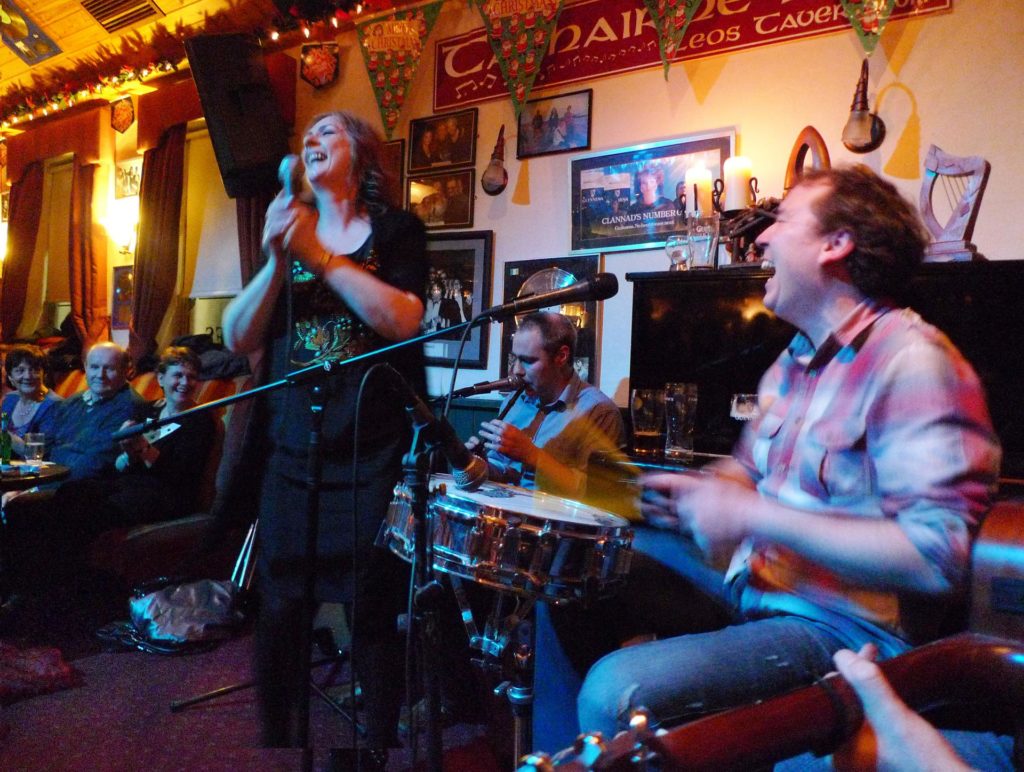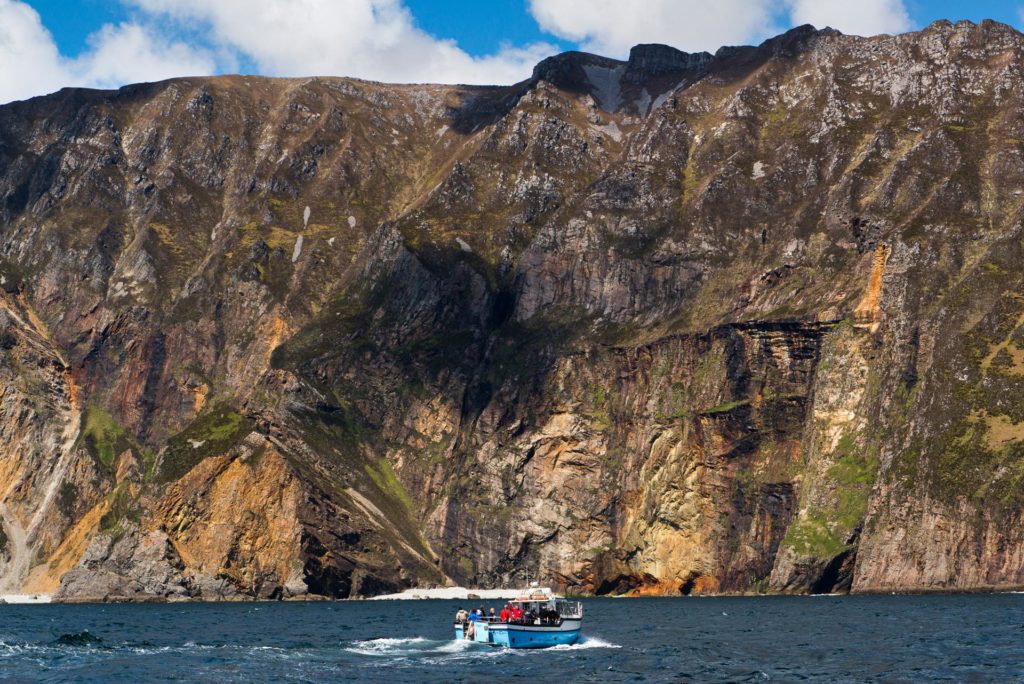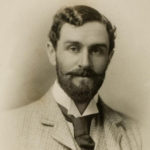Article by Kevin Cullen – Boston Globe Staff- July 20, 2016
GWEEDORE, Ireland — Joe Coyle used to catch the bus to Dublin on Monday mornings at 4 a.m.
“We were all miserable, every one on that bus,” he said.
Like the others, he worked all week in Dublin, as a media designer, then got back on the bus Fridays for the nearly four-hour slog back up to dear old Donegal. When Mount Errigal came into view, at least on summer nights when the light lasted long, Coyle felt at home again.
But Sundays brought that dread. The bus loomed.
Coyle’s life, and that of his wife and three kids, changed dramatically last year when he moved into the Aislann, an innovation office building here that is part of a 95-acre business park, heavily subsidized by Udaras an Gaeltachta, the agency responsible for developing the Irish-speaking regions of Ireland.
“All I need is a small office with a computer, a phone, and broadband,” said Coyle. “Why work in Dublin when I can work here, in one of the most beautiful places in the world?”
That is essentially the pitch of Udaras an Gaeltacht and Michael Heaney, the director of enterprise, employment, and property for the agency.
“Twenty years ago, you’d go to a company and it was all about roads and electricity,” said Heaney. “Now it’s all about broadband. And the broadband is good.”
Coyle is paying a token fee — about $1,000 a year — to rent his office space in the Aislann, a modern, state of the art building with a library and a child care facility on the first floor.
This part of west Donegal was renowned for being remote, wild, a place where few Irish and fewer tourists ventured, in part because of its location, in part because throughout the Troubles, the security along the border with Northern Ireland was so onerous.

Photo- TIM JARVIS
The region is a hotbed of traditional music. At Leo’s, the music flows as freely as the Guinness.
But the peace process brought down those checkpoints, making the border irrelevant, and broadband has made its remote location almost irrelevant. Its wild beauty is drawing more tourists, and its relatively recent technological accessibility is drawing in more jobs, boosting the number of Irish speakers.
Since the Irish state’s founding in 1922, the government has tried various schemes to maintain and increase the population of the Gaeltacht, which is spread across seven of the Irish Republic’s 26 counties: Donegal, Galway, Mayo, Kerry, Cork, Meath, and Waterford.
The Gaeltacht regions tend to be some of the most picturesque, and isolated, in Ireland. About 75 percent of the 92,000 people who reside in the Gaeltacht live within five miles of the sea, and West Donegal is no exception, where the Atlantic provides a dramatic backdrop from virtually everywhere. The pristine beaches are perfect for walking. The uncrowded roads are perfect for cycling. Glenveagh, Ireland’s biggest national park with its spectacular castle and gardens, is a short drive away.
Donegal Airport is run by Anne Bonner, who everybody knows as Packie’s sister. Packie Bonner was the revered goalkeeper for Ireland’s national soccer team that had a good run in the late 1980s and early 1990s.
Underscoring the Gweedore region’s ties to Scotland, and especially Glasgow, where so many locals worked and lived, there are daily flights to Dublin and Glasgow. There are extra flights on Saturdays, when many locals fly to Glasgow to see their beloved Glasgow Celtic soccer team play. Watching a Celtic game in a pub around here is the second best thing to being in Celtic Park in the Parkhead section of Glasgow.

Photo- DONNCHADH O BAOILL
The Gaoth Dobhair business park.
“I was born in Glasgow. About a third of our office was,” says Donnchadh O Baoill, who works in the local Udaras na Gaeltachta office. “Most people here didn’t have the money to go to America, so they went to Scotland. Glasgow was the biggest Irish-speaking area in the world. My father died in the mines in Scotland. My mother’s family had eight, and five went to Scotland. My mother came back here to work in a doll factory. I was 2 when we came back.”
The Gaoth Dobhair (that’s Gweedore in Irish) business park dates back to 1966, during the 50th anniversary of the Easter Rising, and was a tribute to the efforts of the Rising’s leaders to promote the Irish language. By 1970, there were 200 people working there, and employment peaked in 1998, with 1,388 people working there.
“Nobody believed it could be done,” said O Baoill. “This used to be called the back country.”
But jobs drifted east, and many left for countries where the labor was cheaper, especially in Eastern Europe and Asia.
The theory is that bringing jobs back to the Irish-speaking region will bring back Irish speakers, and it is working. Now, the business park has 21 companies that employ 432 people.
Everyone who comes back cites the same two things: the rustic beauty of the area, and the quality of life.
Sarah McDevitt was producing magazines in Edinburgh, then Belfast, when she realized she could move back here, where her husband grew up.
“With broadband, I can work anywhere,” she said. “This is quite simply a better place to raise a family. When I look up at Errigal, I know I made the right decision.”
Inside another office at the Aislann, Patrick Harkin was trading e-mails with a construction manager in Boston. Harkin’s company, Meastoiri Domhanda International Framers, manages commercial framing projects all over the United States.
“I’m from here, but it was my wife, who is from California, and my kids, who really pushed me to move back here, to live in the Gaeltacht,” says Harkin. “The decision had everything to do with growing up in the Gaeltacht. You can be a child longer here. The innocence lasts longer.”
Eamonn Gallagher, the company’s founder, spent 10 years working in the construction business in New England before he realized he could come home and do everything from here.
He said they analyze multi-million dollar wood framing projects for companies working in New York, Connecticut and Massachusetts. They use FaceTime and Skype for meetings with overseas clients.
And then everyone drives home, to seaside cottages or homes in the shadow of Errigal, Donegal’s highest peak. Gweedore has the seemingly oxymoronic distinction of being the most densely populated rural area in Europe, but that implies something it is not. The rolling hills that sit at the foot of Errigal are dotted with homes that make the landscape look like a postcard.
O Baoill said the economic development will feed a cultural revival, which is deeply rooted in the language. Traditional music and theater here have roots that go back centuries.
The cultural side is about to get a huge boost with the restoration of Amharclann Ghaoth Dobhair, the local theater. It was opened in 1962 by the great actress Siobhan McKenna and was the first place that great traditional musicians from the local area, including Altan and Clannad, had their first gigs.
The restoration plan is well underway and they hope to have it ready for Christmas. The theater, which saw its last performance in 2007, is part of a plan to bring more tourists to the area.
The region is a hotbed of traditional music. At Leo’s, the music flows as freely as the Guinness. The walls are lined with the photos of local music legends, Moyà Brennan and her younger sister, Enya, not to mention Mairead Ní Mhaonaigh, the great fiddler, singer and leader of Altan. In the village of Bunbeg, the Monday night session at Hiudai Beag’s pub rivals any in Ireland. (It’s also a B&B.)
Heaney believes more tourists will translate into more businesses taking up residence. They feed off each other. With that in mind, Udaras na Gaeltachta has retained a Boston-based company, the Moynihan Group, to serve as its representative in the US.
“The key issue is to get people here,” Heaney said. “Once they come here, they fall in love with the land, the language and the people.”
James Moran can attest to that. A local native, he spent years working in the United Kingdom, and was working for a mobile phone company in Manchester, England, last year when he persuaded the company’s principal owners — an Indian, a Pakistani, and a Bangladeshi — to visit here with him. They marveled at the countryside as they landed at the seaside airport. They sat in local cafes, listening to the locals prattle on in Irish.
“On the way back to the airport, one of them said, ‘I think we have found a home.’ They liked the welcome, the family-centered attitude here. That people wanted to live here for the quality of life. They said, ‘Content employees are good employees.’ ”
That company is relocating to Gweedore in July, bringing with them 130 jobs for locals.
And everybody in Gweedore can’t wait to hear Irish spoken with a Bangladeshi accent.
Kevin Cullen is a Globe columnist. He can be reached at cullen@globe.com. Follow him on Twitter @GlobeCullen.

Photo- CHRIS HILL
Slieve League, Sliabh Liag




